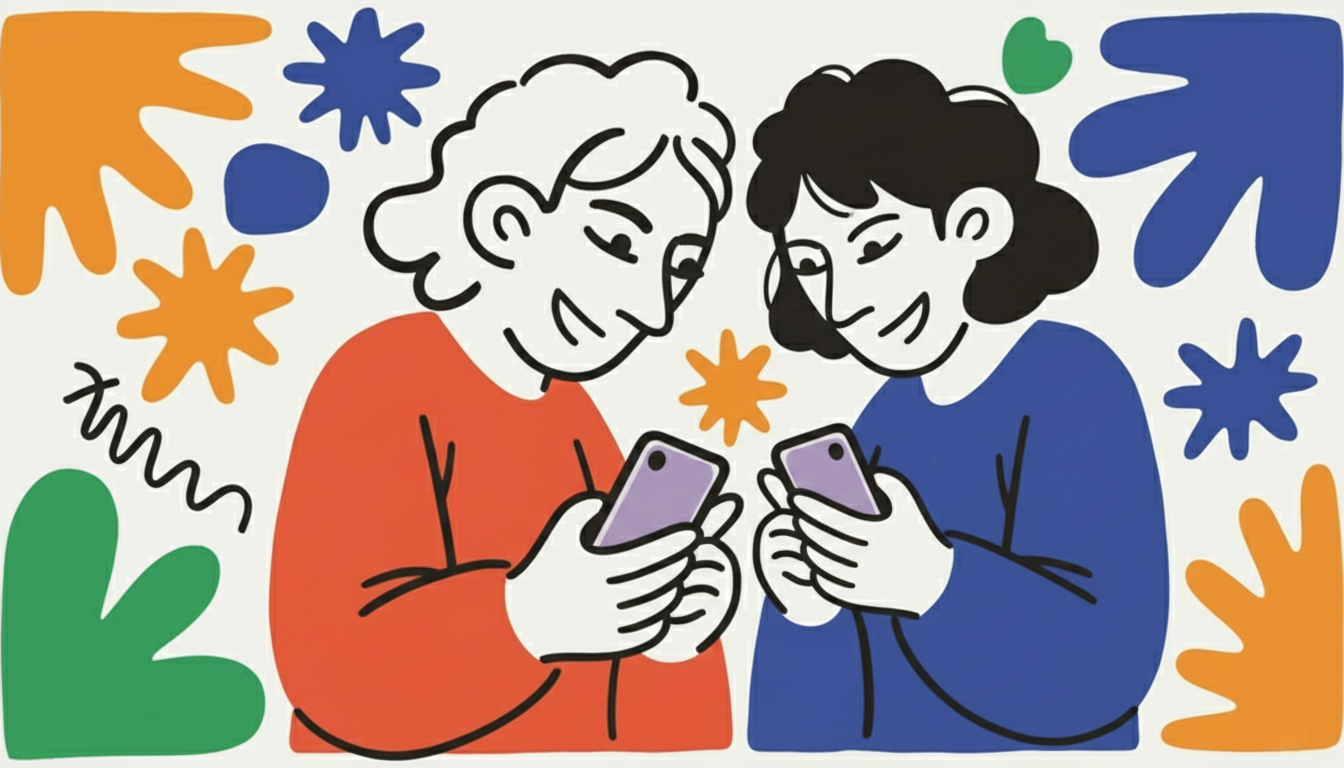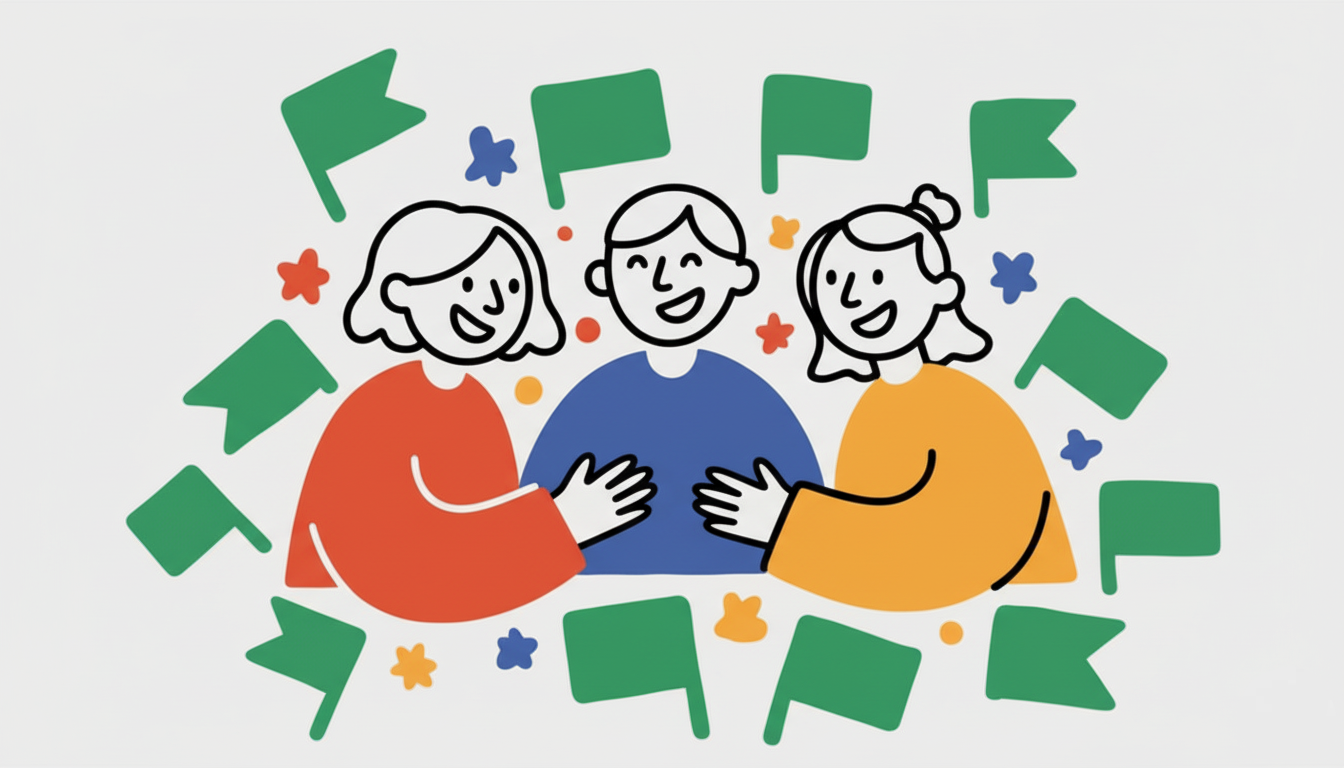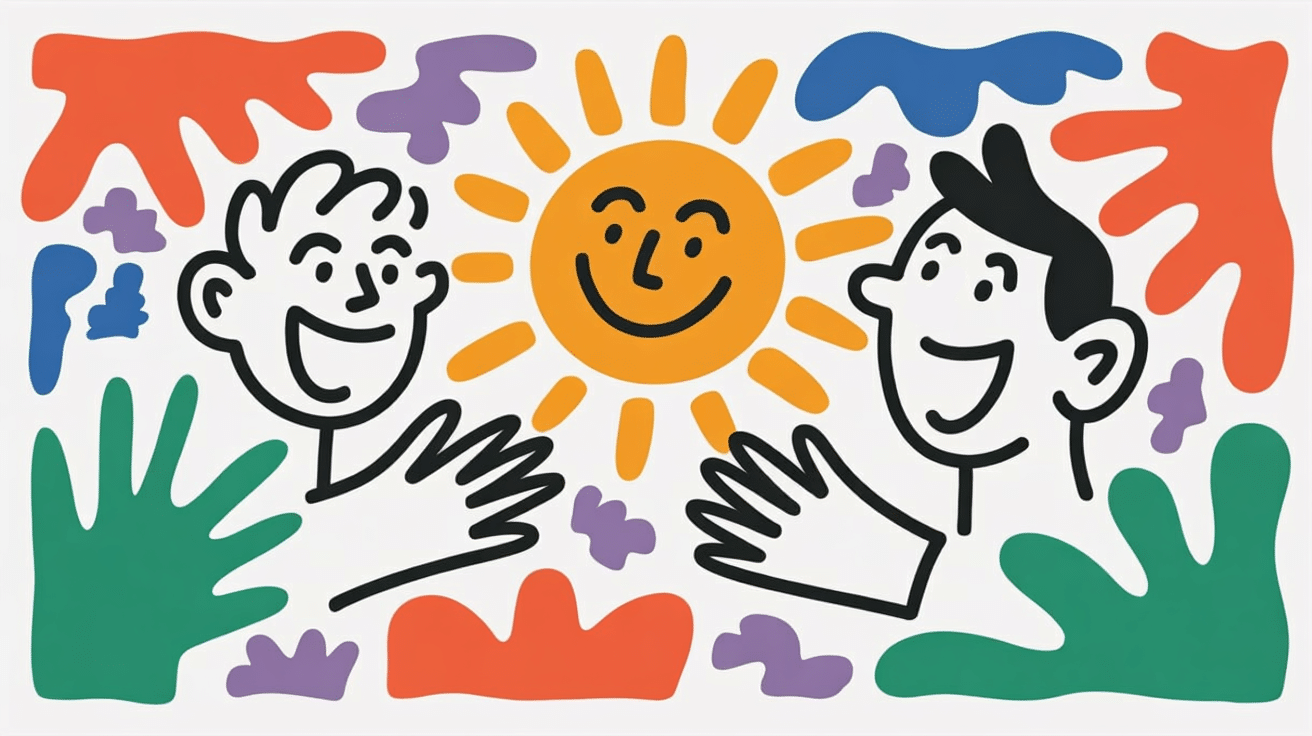

Transgender people are getting a lot of attention right now, whether they want it or not. The issue of gender identity is a hot topic in the media and political circles. There are even conflicting narratives. Some claim the transgender population is exploding. That’s often used as a way to claim that there is indoctrination or that being transgender is a popular fad. Others point out how trans folks are a minority. This may be used in support of the trans community. For example it counters the notion of trans people taking over sports or that individuals will encounter trans folks constantly. On the other hand, this is also used to minimize the importance of transgender issues.
So, what’s the truth? What is the transgender population? Let’s get into the number of transgender people, whether that’s increasing, why or why not, and what that means.
Start With Understanding Gender Identity Expression And More
Just as there are many different kinds of people in the world, there are just as many different ways a person can choose to express their gender and gender identity. With the many different ways a person can potentially express themselves, it can understandably become confusing for some. However this does not mean that it’s impossible for those who do not identify as transgender to understand the nuances of gender identity expression. From different types of gender identity, to the meaning of transgender vs cisgender. Let’s gain a better understanding of what some of these terms mean, and how they affect and relate to the transgender population.
Transgender
Transgender is an umbrella term which describes a variety of different kinds of gender identity where a person identifies as any gender identity other than the one presumed by the sex they are assigned at birth. Many people have a belief that the phrase transgender only includes those who identify as being a man or a woman. Of course, while transgender women, and transgender men are included within the transgender population they are not the only transgender individuals who exist. If a person who is assigned male at birth grows up to identify as transgender in the future, this does not mean they are going to identify as being female. The term transgender applies to those who are agender, as well as to non binary people, among many others. It is also important to remember that not everyone who fits the definition of transgender will identify as transgender
Cisgender
Cisgender is a form of gender identity where a person identifies as the sex they were assigned at birth. Making it the opposite of the term transgender. Due to negative attributes that transphobic and homophobic people have placed on the word transgender there are some who believe that this term is derogative. However this is not the case at all, and is simply a term used to describe a person who is not transgender by creating a word using the prefix “Cis” which means “This side of” as opposed to the word “Trans” which means “On the other side of”.
Intersex

Intersex refers to people being born with or without certain sexual characteristics that do not fit the traditional definition of the male and female binary. This can include variations in anatomy, chromosomes, reproductive organs, and more. These variations can be apparent at birth, but they can also become apparent when a person goes through puberty.
Transitioning
Transitioning is the process in which a person who may identify as transgender will begin to adopt the characteristics that openly match their chosen gender identity. The process of transitioning is different for everyone, but it is one of the biggest steps for those who identify as transgender.
There are different types of transitioning that transgender people may discuss as part of their experience. For exampl,e there is social transitioning. This is the process where someone might identify themselves as their authentic gender, use a new name, select pronouns that align with their identity, and possibly present themselves in a way that connects with their gender identity.
There’s also medical transitioning. This includes having surgery, speech therapy, and taking hormones.
It is important to understand that transitioning is deeply personal. Whether someone has taken specific steps associated with this process or not, they are still transgender, and they are the gender with which they identify. The key point to remember is that identity is personal. Nobody is obligated to present some arbitrary level of masculinity or femininity to identify as transgender.
Gender Identity

Gender identity is defined as an individuals innate sense of gender. It is also an umbrella term used to describe the many ways a person may identify themselves as a person. This includes identities such as;
- Male
- Female
- Non Binary
- Agender
- Gender fluid
- Genderqueer
- Transgender
Gdnder identity is self-defined and internal. Each person decides how they will identify.
Gender Expression
Gender expression is the way a person chooses to express their gender identity. This can be done in a large number of ways throughout the cisgender and transgender population such as through mannerisms, clothing, appearance and more. However it is also important to understand that expression of ones gender identity does not look the same for every person.
For example there can be male cross dressers who happily wear clothing that is traditionally designed for women who do not identify as women. There are also transgender people who feel comfortable in the clothing designed for the gender they were assigned to at birth, who are no less transgender based on what they wear.
Non Binary
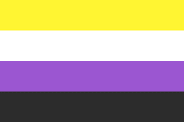
Non binary is a type of gender identity where a person does not identify as either gender on the male and female binary. This gender identity is an umbrella term used to describe a wide range of gender identities, and can be used to describe anyone who settles between, away from, or completely off of the traditional gender binary.
Agender

A type of non binary gender identity in which a person does not identify as any gender within the binary spectrum of gender identity. A person who is agender often considers themselves to be genderless or without a gender.
Gender Fluid
A type of non binary gender identity where a persons chosen gender identity may change based on a variety of factors.
Gender Non-Conforming
Gender nonconforming is a term used to describe a person who chooses to not express their gender identity in the way that matches societies standards of what is considered to be appropriate. People who are cross dressers are a common example of people who are gender non-conforming.
Transsexual
An archaic and somewhat offensive term that was once used to describe transgender folks. The reasons the term transsexual are offensive to many is that it implies that this is a type of sexuality. Also, many feel as though the term reduces gender diversity to body parts and medical procedures. The word also excludes non binary and gender fluid individuals in the population. As with other minority cultures, opinions on the word transsexual vary. However, it is best for those who are not trans or gender fluid to avoid using it altogether.
Transvestite
A transvestite is a person who enjoys dressing as the opposite gender. Some do this for sexual or emotional fulfillment. Others may want to make a sociopolitical statement or dress that way for entertainment purposes. This word is often used as a slur to insult men who are gender non conforming because of the clothing the wear. It’s best to avoid using this word unless a person uses it to self-describe.
Biological Sex
This refers to the categorization of people according to the sex traits they possess.
Understanding Potential Challenges in Data Collection
Data from surveys shown above and others show that a growing percent of the country’s population identifies as transgender, non binary, or gender fluid. Estimates are that younger adults and kids are more likely to identify outside of the traditional male-female binary with many expressing that the gender and sex labels applied to them don’t reflect their experiences.
Respondents to these instruments often indicate fearing violence or stigma. This may prevent them from openly identifying as transgender or non binary, especially within conservative communities. Still evolving language and increasing visibility have improved representation and understanding across the country. The hesitance to identify as transgender, gender fuid, or non binary may make it difficult to quantify with exact numbers, but the data we have suggests that the number of adults who identify as trans, non binary, or gender fluid is on the rise. This indicates a shift in how the population expresses and understands gender. Although the ability to collect information without these roadblocks would improve the accuracy of these estimates. This issue is even more prominent in cultures that are more repressive when it comes to sex and gender.
What is The Transgender Population Today?
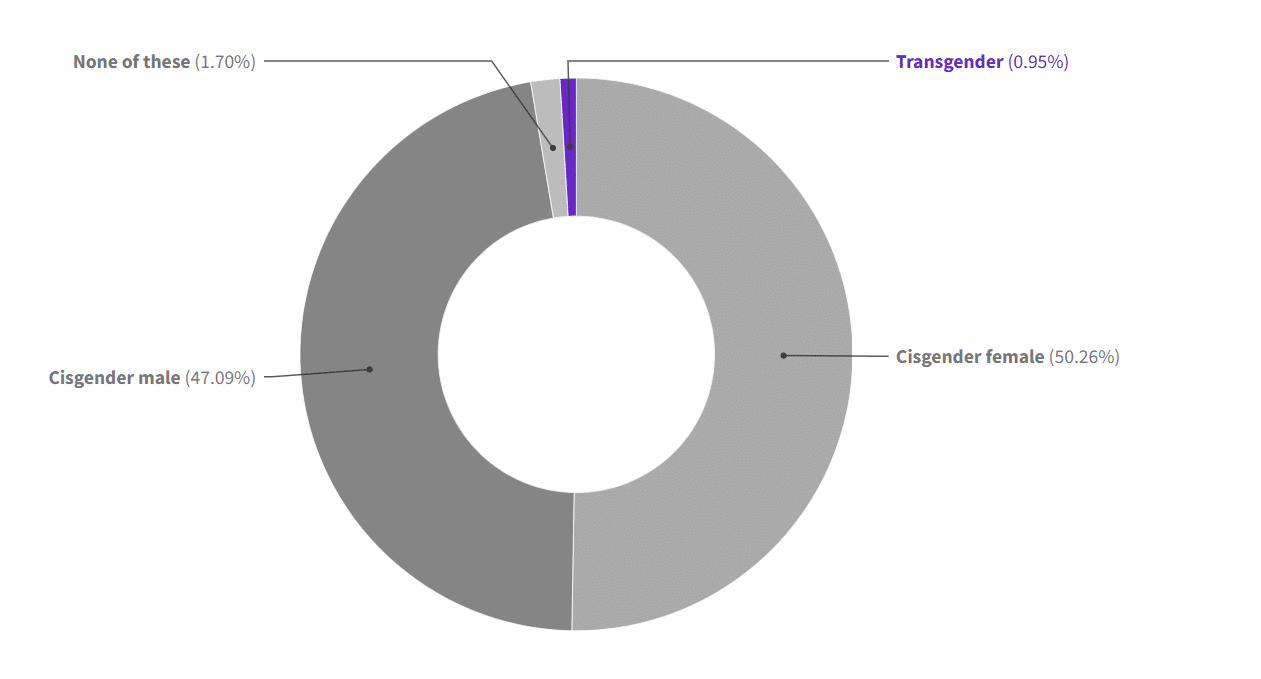
According to a study published by usafacts.org in February of 2025, the percentage of the general population of the United States who choose to openly identify as being transgender is only 0.95 percent. However the graph also shows that another 1.70 percent of people identify as being non binary or genderless. This means that a total of 2.65 percent of the general population of the United States does not identify as the gender they are assigned at birth. Although these numbers may appear to be small this means that over 8.3 million individuals in the United States are considered to be transgender.
It’s not as easy to determine the transgender population on a global scale. However, Statista surveyed 30 countries. Their results showed that around 3% of respondents identify as transgender, nonbinary, gender fluid, or something other than cisgender.
How can we put the transgender population into perspective? The population of Canada is about .5% of the world’s overall population. The population of the United States is about 4.4%. That means there are more transgender people than the population of Canada, but slightly less than the United States.
Transgender History
Transgender people have always existed throughout history. However due to homophobic and queerphobic practices across the globe the identities of many many members of the LGBTQ+ community had been historically erased. This has created an illusion where many people could see being transgender as a strange or new phenomenon even though it has existed for as long as humans have existed.
Although the phrase transgender wasn’t used until the 1960’s, people have historically explored their gender identity and have challenged the binary across all cultures in a number of ways.
Gala and Galli

These are a couple of the earliest known terms used to describe transgender individuals. The phrases Gala and Galli were used to describe individuals who were assigned male at birth who crossed the boundaries of gender as part of their worship to the goddesses they followed in the ancient countries of Sumer, Akkadia, Greece, and Rome.
Indigenous Communities

Historically, many indigenous communities and cultures around the world have acknowledged more than 2 types of gender identity. The most commonly known of these identities is “two-spirit”. Which is a term used to describe someone who identifies as both male and female. People who identified as two-spirit would fill significant roles in the cultures they lived in. These roles include healers, shamans, and ceremonial leaders.
Hijira

This refers to a non binary, gender fluid, transgender, or intersex population of those who lived in southern Asia. They perform many important roles such as blessings during weddings and births.
Elagabalus

Elagabalus is a transgender person, and is likely one of the earliest recorded instances of a specific transgender individual we currently have. From 218 to 222 CE, Elagabalus was the emperor of Rome. Born as a male, she would dress herself in feminine clothing, request to be referred to with feminine pronouns, and even expressed a desire to have her genitals removed. Sadly her reign was cut short as she was shunned and stigmatized by those around her. Her life was cut short at the age of 18 when she was assassinated and her body was thrown into the Tiber river.
Why Does it Seem Like There Are More Transgender People Now?
It is a simple fact that trans people have always existed in some shape or form. However over the years it seems as though the number of transgender people has increased. But why is this happening?
There are more people in the world

Naturally as the number of people in the world increases, so does the number of those who have a gender identity that is different from the one they are assigned at birth.
Transgender People are More Visible in Media

Until recent years the most one could expect to see of someone who is part of the LGBTQ community being portrayed in the media is through the campy stereotype of the gay best friend. Or the stereotypical villain of a children’s film.
Today we have a variety of transgender characters and roles. Although seeing these characters is not going to make any member of the general population become transgender, they very likely make more people comfortable with exploring their gender identity as well as make those who are transgender more comfortable with coming out.
Of course, this increased visibility can also increase feelings and expressions of transphobia. Just like the initial appearance of queer characters and people in the media led to claims that “gays are everywhere”, now there are claims that trans people are everywhere. This happens when members of the majority population or forced to contend with the existence of others.
Transgender Individuals Want to Live Authentically
Throughout history those who would identify as transgender often faced the risk of being arrested, beaten, abused, and even killed. Which caused many people who wished to identify as transgender to live in fear. Hiding their true selves away from the world as a way to protect themselves. However thanks to the support of others, as well as the historical erasure of the identities of many transgender individuals throughout history. Many transgender people today choose to live as their authentic selves.
Trans People Are Gaining Acceptance – Sort Of
On a global scale, people who identify as transgender are experiencing greater acceptance. However, when we focus on the United States, things get more complicated. According to Pew research, most are supportive of those who identify as transgender in that they believe discrimination exists. 80 percent believe that there should be laws protecting trans individuals from discrimination in housing, employment, and existence in public spaces.
Despite this, 60 percent also believe that being born male or female is what determines gender. There is also pretty deep division when it comes to which percentage of Americans believe that transgender people are accepted. Additionally, the same percentage of Americans believe that those who identify with transgender should only be allowed to compete in sports categories that align with the sex they were assigned at birth. Americans are also deeply divided on whether schools should teach about gender identity, or if adults in school should respect children’s chosen names or pronouns.
Predictably, higher percentages of young people accept those who identify as transgender. Additionally, these views are impacted by political party loyalty. A much higher percentage of conservatives advocate for harsh penalties for people who support their transgender children than those who are more progressive.
Can Kids be Trans or Non Binary?
Yes, many transgender individuals actual claim to have known they were transgender since they were very young. However many of them would not transition until they were adult or teenagers due to a lack of understanding of their gender identity, or lack of support from their immediate family.
Can (Should) Transgender Children Transition?
Should children who identify as transgender be allowed to transition? This question attempts to reduce a very complex topic and process down to a yes or no. It’s understandable that a large percentage of the population wants to have issues like this simplified. In reality, this is a complex matter that requires nuanced understanding.
In recent years, there has been a rise in the number of minors who identify as transgender, non binary, or gender fluid. The fact that young people categorize themselves under the broader umbrella term of transgender shows a growing acceptance and awareness of gender diversity across societies and cultures. Unfortunately, this phenomenon has been misunderstood, and in some cases deliberately misinterpreted.
Some people, especially residents of conservative communities, express concern about the growing percentage of young people seeking gender affirming care. While their concerns are sometimes rooted in worries about regret and long-term outcomes, the data and research do not support this. Instead, estimates suggest gender dysphoria is not new. The difference is that the younger population now feels freer to express it due to lack of stigma and better education around gender.
Adults who waited to transition later in life often report that earlier intervention would have spared them years of social rejection, anxiety, and depression. A supportive environment and a qualified therapist are important in helping non binary and transgender people navigate the process of discovering their gender identity. When these resources are available in childhood, the outcomes are so much better.
Lack of understanding about the transition process along with hateful rhetoric has had an unfortunate influence on the way that people in this country view and discuss young people who are gender fluid, transgender, or non binary. Politicians, the media, and religious leaders have used their platforms to whip up panic in communities by spreading falsehoods.
Let’s address some of the myths:
Transitioning Always Involves Permanent Interventions
Transitioning involves a wide array of steps that someone who is gender diverse may take to align their identity with their presentation. Trans adults and young people may take many of these steps, some of them, or none at all. Not every trans, gender fluid, or non binary person opts to take hormones or have surgery.
Young People Are Receiving Hormones or Surgical Procedures in School
Estimates are that gender affirming surgery can cost more than 100K depending on the exact procedure, insurance coverage, etc. That alone means the notion of schools performing surgical procedures defies common sense. There’s also the issue of medical liability, and the fact that no medical professional would risk their livelihood or licensure to offer these services. Reported incidents of this happening are entirely fictional.
Young People Are Being Subjected to Extreme Surgeries
A troubling percentage of the population in the United States believe that young children are being subjected to permanent, body altering surgeries before puberty simply because they express some uncertainty about their identity. This is untrue. Instead, young people who have supportive adults in their lives are encouraged to access therapy and given support in their efforts to transition socially. Puberty blockers may be used under medical supervision to give young people a chance to fully flesh out their identity before making a decision.
Parental Rights Are Being Taken Away
There is a strict standard of care for transgender children and adolescents. This involves obtaining counseling, a period of social transition, and obtaining parental consent for medical interventions.
Where parental rights are being rolled back is in legislative work that is being done to harm parents who support their transgender children. In some places in this country a parent may lose custody or face other legal consequences for obtaining gender affirming care for their children.
Additionally, despite making claims that they only care about protecting children, conservative lawmakers in many places are also expanding those restrictions to impact adults.
Female Sports Are Being Invaded
There is not a significant number of trans individuals joining sports teams at any level of competition. Where trans individuals do play sports, they are subject to rules established by those sports’ governing bodies to ensure safety and fair competition.
Many Adults Regret Transitioning
Research shows that very few adults regret that they transitioned. Further, most adults who have reported regretting their transitions feel that way due to lack of support and inability to obtain the care they need – not because they realize they are not transgender. It is reported that significantly more people regret having previously undergone knee replacement surgery than a gender affirming procedure.
Ultimately, allowing transgender young people to transition—socially, medically, or otherwise—is not about encouraging a trend. It’s an effort to respond with compassion to the real experiences of young women, men, and others who do not fit into binary definitions of sex. As more respondents across the population of the world voice their support, transgender, gender fluid, and non binary people may experience acceptance and equality.
How do You Know Someone is Transgender?
Although guesses can be made it is actually hard to be sure if a person is transgender or not based on their physical appearance. There have been cases of cisgender people being harassed, attacked, and even killed because others have made the assumption that they identify as transgender based on their physical appearance.
The only way to know if a person is transgender or not is if the person openly tells you or says it to you. However it is important to remember that this is not an invitation to fish for potentially private and harmful information about a person based on their gender identity. If a member of the transgender population wishes to openly tell you that they identify as transgender that should be done at their own discretion.
Impacts of The Anti-Trans Backlash
In recent years, there has been a rise in trans visibility that includes those who identify as transgender, non binary, or gender fluid. This has led to positive outcomes, for example there is increased support for equality and gender diverse individuals across the country are experiencing more representation than ever. Unfortunatly, there as also been a significant anti-trans backlash that impacts both adults and young people. This backlash has led to legislative efforts to block access to gender affirming care, rollback trans rights, and strip protections from both young people and adults.
Further, this backlash influences public perceptions, data, and estimates on the number of transgender people in this country. This has also led to a sharp increase in crimes gainst gender diverse men, women, and others around the globe.
The social climate that is being created today does more than undermine equality. It is fueled by political scapegoating and religious rhetoric. Those who identify as transgender, gender fluid, and non binary face increased mental health struggles, violence, and legal discrimination. Many are unable to obtain healthcare, access therapists, or feel safe in public spaces. In some cases their lives are in danger.
Despite this, there is a long history of gender diversity from the Hijira population in India to historical figures in the West who were almost certainly non binary. When these are dismissed as modern creations or trends, historical truth and lived experiences are ignored. Backlash against trans adults and youth doesn’t just hurt members of these communities. It dampens our understanding of gender diversity in society. until trans and non binary adults and young people can identify without fear, who will never truly know which percent of people in this country or the world are gender diverse. The data will remain skewed due to fear from respondents as well as efforts to erase study information that that doesn’t align with Christian nationalist power structures or rhetorical goals.
Let’s Talk About Detransitioning
Detransitioning is a process in which a transgender person chooses to go back to their assigned birth gender identity. Most transgender people may shift through a couple of different kids of gender identity as they figure out who they are, however very few go through the process of detransitioning.
Detransitioning is often a last resort that some members of the community go through in order to regain relationships and a much needed safety net. It is often the result of abusive practices that results in transgender people feeling the need to reject themselves as individuals and can take a serious toll on a persons mental and emotional health.
There’s also a tragically practical factor in many cases of detransitioning. When a person who identifies as transgender is unable to obtain the healthcare they need, faces homeless, is threatened with violence, or is afraid of their transitioning being criminalized – they may feel as if they have no choice but to detransition.
Detransitioning can even cause individuals to adopt transphobic ideologies. Which some may even say is a type of projection, or a reaction of jealousy. Many people confuse data about transitioning with proof that many people were never trans in the first place. This is rarely the case.
Final – You Can be Loving And Supportive Now
Understanding the population growth of people who identify as transgender is more than interpreting data. It is recognizing that gender identity has never been confined to rigid boundaries. The reality is that trans and gender fluid people have always existed. There have always been folks who would identify as transgender, gender fluid, non binary, or simply gender nonconforming today. Countries like India have had long established traditions where transgender, gender fluid, and other gender diverse populations are celebrated as welcome and important members of the community.
That isn’t to say that research and data isn’t important. It is! Data gives us information that we can use to challenge bigoted rhetoric against people who identify as transgender or non binary. For example, knowing that there have been trans folks in every population throughout history proves it isn’t a modern trend. The fact that we know that more adults and kids now openly identify as something other than the sex they were assigned at birth is a clear demonstration that vilifying gender diverse people doesn’t make them disappear.
Data also forces us to face uncomfortable truths. We know that people who identify as transgender, gender fluid, or non binary face discrimination, rejection, and hate. They encounter systemic barriers to receiving healthcare, social rejection, and discrimination in employment and housing.
Most importantly, the data provided by respondents to surveys and studies reveals an immediate need. People who identify as transgender, gender fluid, or non binary need support now. They need action, advocacy, and mutual aid. Both adults and kids in gender diverse populations deserve rights, dignity, and agency now.


